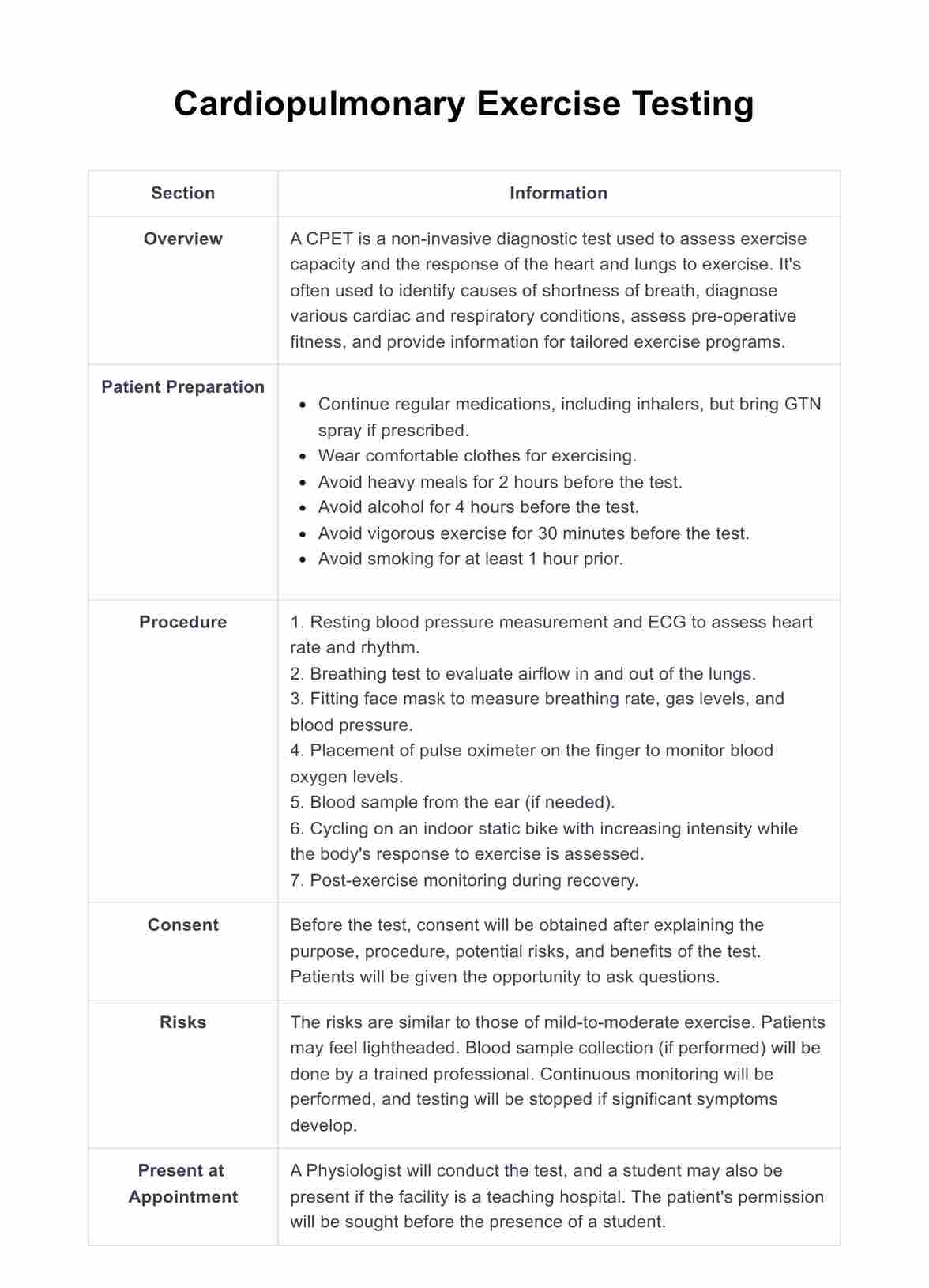CPET is a detailed method to assess the exercise capacity and cardiopulmonary function of individuals. It's particularly valuable in diagnosing and managing chronic heart and lung conditions such as chronic obstructive pulmonary disease (COPD), coronary artery disease, pulmonary hypertension, chronic heart failure, and interstitial lung disease. By measuring variables like peak oxygen uptake, carbon dioxide production, and gas exchange during exercise, CPET helps in understanding the severity of these conditions and guiding therapeutic interventions.












